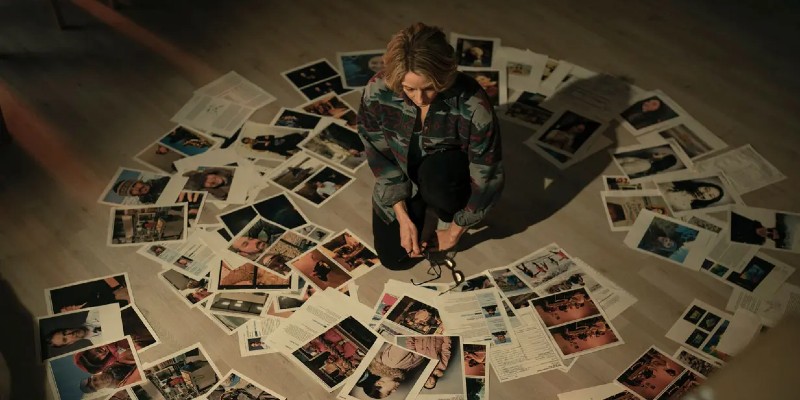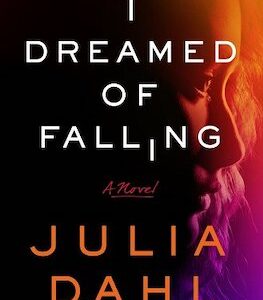Relaunching a famous series is always a dicey proposition, especially if a new set of creatives are taking over for the original author. Think of all the writers tasked with writing new James Bond or Jason Bourne novels—it’s easy to replicate a prose style, harder to capture the original spirit while evolving it in compelling ways. With a television series like “True Detective,” which recently launched its fourth season with an all-new showrunner and writers, the stakes are doubly high, given a rabid fanbase and the relatively short time since the show’s previous iterations.
Does the new season succeed? Issa López, the showrunner who wrote or co-wrote all the latest episodes, wisely takes much of what made the show’s first three seasons work so well, while tweaking other elements so it becomes her own beast. The action is set in the fictional town of Ennis, Alaska, which sits in darkness for much of the winter; a group of scientists disappear from a nearby research station, only to be rediscovered on the tundra, frozen into a gruesome sculpture.
As local police chief Liz Danvers (Jodie Foster) tries to solve the case, she crosses paths with state trooper Evangeline Navarro (Kali Reis); the two share a secret, bloody history. Both are constantly at odds with their fellow officers, and half the town seems haunted by ghosts real and metaphorical. In contrast to previous seasons, which largely hinted at supernatural elements, this season is all-in on the mystical and occult: a murder victim’s body part mysteriously reappears after six years, a man in a coma shouts messages seemingly from the great beyond, and an invisible force likes tossing oranges in the dark.
Judged on its own, those supernatural elements bring this season more in alignment with Arctic and Antarctic horror flicks such as “The Thing” and “30 Days of Night.” The genre-blending doesn’t work for everyone; as Joyce Carol Oates tweeted: “’True Detective’ commingling genres: mystery/crime/detection with horror/gothic/surreal. this merging is always to the detriment of the detective story since a police investigation depends upon scientific principles; once you introduce the supernatural, the story is in free fall.”
But then again, the series has never been shy about toying with the definition of a police procedural.
Dark History
The first season of “True Detective” was a freak of nature. You had an actor on a professional hot streak (Matthew McConaughey) who had enormous chemistry with his co-star (Woody Harrelson); a writer (Nic Pizzolatto) who’d tooled with the story as a possible novel before transforming it into a six-part screenplay, giving the narrative a singular voice; and a director (Cary Fukunaga) with a flair for visuals, including one very memorable tracking shot.
That alchemy translated into awards, huge ratings, a major place in the cultural firmament. The plot’s central element—the pursuit of a serial killer—might have been standard-issue, but there was something exciting about McConaughey as Detective Rust Cohle and his anti-natalist ranting, along with the tight bond he builds with Harrelson’s Detective Marty Hart, a good ol’ boy who isn’t very good at all under the surface. When was the last time you watched a series where the most memorable parts were two guys arguing about philosophy during long car rides?
It’s always a tricky proposition to guess a writer’s intentions, but after the soaring success of the show’s first season, it seemed like Pizzolatto was emboldened to take on the Mount Everest of crime fiction: epic California noir. As a writer, if you get this particular subgenre right, you stand on the peak alongside “Chinatown,” James Ellroy’s L.A. Quartet, “Heat,” and other masterpieces; if you get it wrong, everyone derides your work as hacky pastiche.
The second season of “True Detective” follows four characters (three morally wounded cops and a gangster trying to go legit) as they tackle rot and corruption in the industrial city of Vinci, on the edge of Los Angeles. Upon its debut in 2015, many of the show’s critics were unkind; a spirited debate raged online as to whether Pizzolatto had delivered a turd or something great. (I think there’s a lot to like in those eight episodes, but there’s a roughness to it—potentially a consequence of a rushed production schedule and multiple directors.)
Which brings us to the show’s third season, starring Mahershala Ali as Ozarks detective Wayne Hays across three (!) timelines. It’s something of a return to the first season’s framework: a haunted detective obsessed for decades with a single case; a macabre mystery involving powerful men; and a complicated, chatty relationship between Hays and his cop partner, Roland West (a wry Stephen Dorff). It received favorable reviews, more for the characters than the central mystery, but it didn’t win the accolades of the first season.
Which Brings Us…
…back to Alaska, and Danvers and Navarro standing before all those frozen corpses. Throughout the years and different showrunners, “True Detective” remains the most distinctively spooky show on television. But here’s the thing about this season versus the ones written by Pizzolatto, particularly season three: López really makes things move. There are moments of introspection, but every episode is a chain reaction of cliffhangers, deaths, and twists. Not all of it sticks, but in a weird way, that also works in the story’s favor: at its best, it plays much more like an old-school, weirdo pulp novel than Pizzolatto’s efforts, which tried for a much more meditative, literary take on the old genre tropes.
And whatever your feelings about the supernatural elements (Hi, Joyce!), there’s a proud tradition of procedurals and crime fiction melding with horror. In the mid-20th century, the feverish pulp ecosystem produced magazines like “Strange Detective Stories” and “Strange Romance” that tried to synthesize elements of both; and those, in turn, were the spiritual forefathers of books like William Hjortsberg’s “Falling Angel,” eventually made into the movie “Angel Heart.” López is just playing out a longstanding thread.
Even if the horror elements have been dialed to eleven, though, this edition of “True Detective” tones down the philosophical musings that marked the previous seasons; these cops don’t have time for any of that. For much of the season, Foster’s Danvers and Reis’s Navarro largely pursue their investigation on separate tracks, and their main car conversation—that staple of previous seasons—is more funny than existential or revealing. It’s a smart move to avoid echoing Pizzolatto’s most famous writerly trick, because it gives López more leeway to shape “True Detective” in fresh ways. It’s fun to watch something familiar mutating into new form.

















